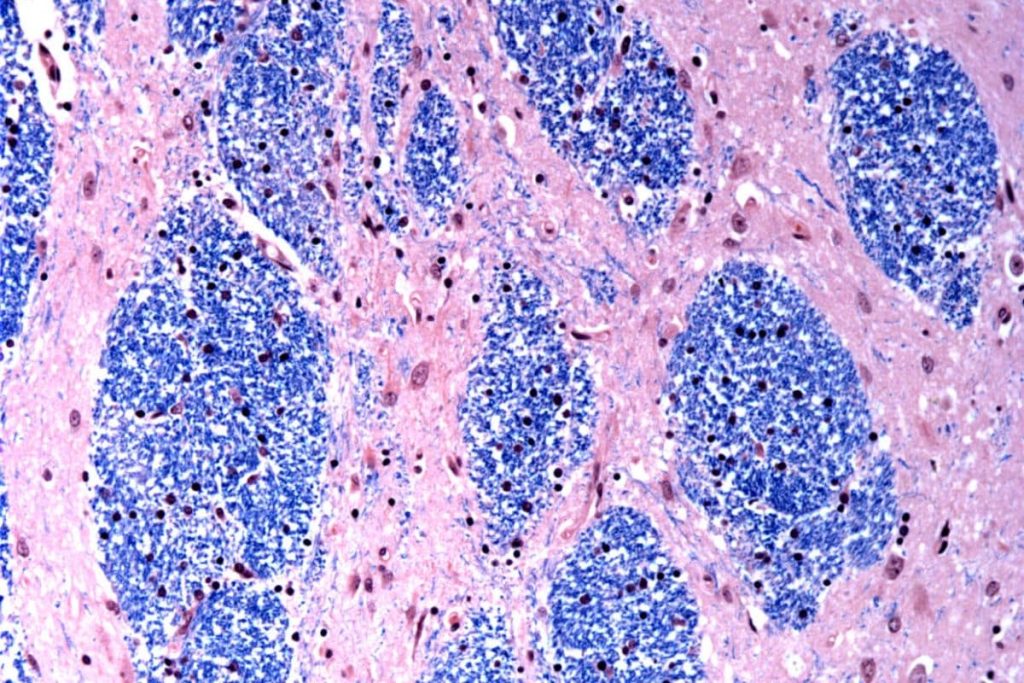New Research Sheds Light on the Causes of Huntington’s Disease – The Daily Galaxy –Great Discoveries Channel

What if the answer to treating Huntington’s disease wasn’t as far out of reach as we thought? A new, unexpected finding is turning everything we know about the disease on its head. Scientists may have just unlocked a crucial piece of the puzzle that could lead to life-changing treatments. If you’ve ever heard of Huntington’s disease, you know how devastating it can be. This hereditary brain disorder slowly robs people of their ability to think, move, and even communicate. The disease’s progression is relentless, often beginning in a person’s prime—between the ages of 30 and 50. But here’s the big question: Why does it strike so late in life, even though the genetic mutation responsible is present from birth?Recently, scientists uncovered a surprising clue, and it might just change the way we think about and treat this condition.Huntington’s disease stems from a mutation in the HTT gene, which includes a repetitive sequence of DNA known as the CAG repeat. While healthy individuals have between 15 and 35 CAG repeats, those with Huntington’s often have 40 or more. Until now, scientists have struggled to explain why individuals with this mutation can live symptom-free for years before developing severe neurological issues.New findings shed light on this mystery. Researchers discovered that the CAG repeat expansions are relatively harmless at first but grow progressively longer over time. When the number of repeats exceeds a threshold of approximately 150, toxic proteins are produced, triggering the death of neurons in critical brain areas. This progression explains why symptoms typically appear between the ages of 30 and 50, despite the presence of the mutation from birth.Huntington’s disease causes the gradual breakdown of nerve cells, leading to a range of symptoms that worsen over time. These include:These symptoms gradually worsen over 10 to 25 years, leaving patients increasingly dependent on caregivers. About 41,000 Americans are currently living with Huntington’s, while many others carry the gene and fear its eventual onset.But here’s the hope: This new research could open the door to treatments that delay—or even prevent—the disease.The research, led by scientists at the Broad Institute of MIT and Harvard, analyzed brain tissue samples from 103 individuals—53 with Huntington’s disease and 50 without. They studied half a million cells to understand how the disease evolves at the molecular level.The team found that the CAG repeat expansions occur at varying rates throughout a person’s life. During the first two decades, these expansions grow slowly, but their rate accelerates significantly after reaching around 80 repeats. By the time they exceed 150, certain types of neurons—especially those in the caudate nucleus, a brain region crucial for movement and decision-making—begin to die.Dr. Steve McCarroll, a co-senior author of the study, called the findings “really surprising.” He noted that while previous research suggested 30 to 100 CAG repeats might cause the disease, their work demonstrated that significantly larger expansions are required to trigger the condition.Despite the insights provided by this research, finding effective treatments for Huntington’s disease remains challenging. Current medications only manage symptoms rather than addressing the underlying genetic causes. Experimental drugs designed to lower the levels of the toxic protein produced by the mutated HTT gene have faced setbacks in clinical trials.The new findings suggest that targeting the DNA expansion process itself could be a more promising approach. By slowing or halting the growth of CAG repeats, scientists may be able to delay or prevent the onset of the disease. Several pharmaceutical companies are now exploring this strategy, though it remains in its early stages.Dr. Sabina Berretta, another senior author of the study, emphasized the potential impact of this research.“The longer the repeats, the earlier in life the onset will happen.”The discovery of the role of large CAG expansions initially met resistance in the scientific community. Previous studies had focused on shorter expansions and concluded that they were necessary but not sufficient to cause the disease. However, this new research has provided compelling evidence that expansions beyond 150 CAG repeats are a critical factor.Dr. Mark Mehler of the Albert Einstein College of Medicine put it, this study is a “landmark” achievement that addresses longstanding questions in the field. He believes it could pave the way for a new era of Huntington’s disease research.Got a reaction? Share your thoughts in the commentsEnjoyed this article? Subscribe to our free newsletter for engaging stories, exclusive content, and the latest news.Comment Save my name, email, and website in this browser for the next time I comment.
© 2024 | Daily Galaxy | All rights reserved
Source: https://dailygalaxy.com/2025/01/huntingtons-disease/






